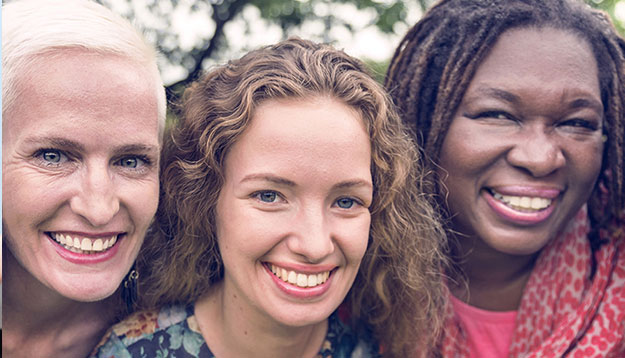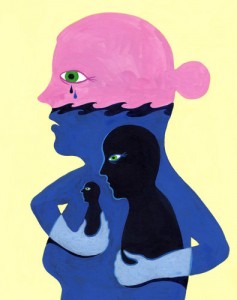By MARK EPSTEIN
The New York Times
Published: August 3, 2013
Talking with my 88-year-old mother, four and a half years after my father died from a brain tumor, I was surprised to hear her questioning herself. “You’d think I would be over it by now,” she said, speaking of the pain of losing my father, her husband of almost 60 years. “It’s been more than four years, and I’m still upset.”
I’m not sure if I became a psychiatrist because my mother liked to talk to me in this way when I was young or if she talks to me this way now because I became a psychiatrist, but I was pleased to have this conversation with her. Grief needs to be talked about. When it is held too privately it tends to eat away at its own support.
“Trauma never goes away completely,” I responded. “It changes perhaps, softens some with time, but never completely goes away. What makes you think you should be completely over it? I don’t think it works that way.” There was a palpable sense of relief as my mother considered my opinion.
“I don’t have to feel guilty that I’m not over it?” she asked. “It took 10 years after my first husband died,” she remembered suddenly, thinking back to her college sweetheart, to his sudden death from a heart condition when she was in her mid-20s, a few years before she met my father. “I guess I could give myself a break.”
I never knew about my mother’s first husband until I was playing Scrabble one day when I was 10 or 11 and opened her weather-beaten copy of Webster’s Dictionary to look up a word. There, on the inside of the front cover, in her handwriting, was her name inscribed in black ink. Only it wasn’t her current name (and it wasn’t her maiden name). It was another, unfamiliar name, not Sherrie Epstein but Sherrie Steinbach: an alternative version of my mother at once entirely familiar (in her distinctive hand) and utterly alien.
“What’s this?” I remember asking her, holding up the faded blue dictionary, and the story came tumbling out. It was rarely spoken of thereafter, at least until my father died half a century later, at which point my mother began to bring it up, this time of her own volition. I’m not sure that the trauma of her first husband’s death had ever completely disappeared; it seemed to be surfacing again in the context of my father’s death.
Trauma is not just the result of major disasters. It does not happen to only some people. An undercurrent of trauma runs through ordinary life, shot through as it is with the poignancy of impermanence. I like to say that if we are not suffering from post-traumatic stress disorder, we are suffering from pre-traumatic stress disorder. There is no way to be alive without being conscious of the potential for disaster. One way or another, death (and its cousins: old age, illness, accidents, separation and loss) hangs over all of us. Nobody is immune. Our world is unstable and unpredictable, and operates, to a great degree and despite incredible scientific advancement, outside our ability to control it.
My response to my mother — that trauma never goes away completely — points to something I have learned through my years as a psychiatrist. In resisting trauma and in defending ourselves from feeling its full impact, we deprive ourselves of its truth. As a therapist, I can testify to how difficult it can be to acknowledge one’s distress and to admit one’s vulnerability. My mother’s knee-jerk reaction, “Shouldn’t I be over this by now?” is very common. There is a rush to normal in many of us that closes us off, not only to the depth of our own suffering but also, as a consequence, to the suffering of others.
When disasters strike we may have an immediate empathic response, but underneath we are often conditioned to believe that “normal” is where we all should be. The victims of the Boston Marathon bombings will take years to recover. Soldiers returning from war carry their battlefield experiences within. Can we, as a community, keep these people in our hearts for years? Or will we move on, expecting them to move on, the way the father of one of my friends expected his 4-year-old son — my friend — to move on after his mother killed herself, telling him one morning that she was gone and never mentioning her again?
In 1969, after working with terminally ill patients, the Swiss psychiatrist Elisabeth Kübler-Ross brought the trauma of death out of the closet with the publication of her groundbreaking work, “On Death and Dying.” She outlined a five-stage model of grief: denial, anger, bargaining, depression, acceptance. Her work was radical at the time. It made death a normal topic of conversation, but had the inadvertent effect of making people feel, as my mother did, that grief was something to do right.
Mourning, however, has no timetable. Grief is not the same for everyone. And it does not always go away. The closest one can find to a consensus about it among today’s therapists is the conviction that the healthiest way to deal with trauma is to lean into it, rather than try to keep it at bay. The reflexive rush to normal is counterproductive. In the attempt to fit in, to be normal, the traumatized person (and this is most of us) feels estranged.
While we are accustomed to thinking of trauma as the inevitable result of a major cataclysm, daily life is filled with endless little traumas. Things break. People hurt our feelings. Ticks carry Lyme disease. Pets die. Friends get sick and even die.
“They’re shooting at our regiment now,” a 60-year-old friend said the other day as he recounted the various illnesses of his closest acquaintances. “We’re the ones coming over the hill.” He was right, but the traumatic underpinnings of life are not specific to any generation. The first day of school and the first day in an assisted-living facility are remarkably similar. Separation and loss touch everyone.
I was surprised when my mother mentioned that it had taken her 10 years to recover from her first husband’s death. That would have made me 6 or 7, I thought to myself, by the time she began to feel better. My father, while a compassionate physician, had not wanted to deal with that aspect of my mother’s history. When she married him, she gave her previous wedding’s photographs to her sister to hold for her. I never knew about them or thought to ask about them, but after my father died, my mother was suddenly very open about this hidden period in her life. It had been lying in wait, rarely spoken of, for 60 years.
My mother was putting herself under the same pressure in dealing with my father’s death as she had when her first husband died. The earlier trauma was conditioning the later one, and the difficulties were only getting compounded. I was glad to be a psychiatrist and grateful for my Buddhist inclinations when speaking with her. I could offer her something beyond the blandishments of the rush to normal.
The willingness to face traumas — be they large, small, primitive or fresh — is the key to healing from them. They may never disappear in the way we think they should, but maybe they don’t need to. Trauma is an ineradicable aspect of life. We are human as a result of it, not in spite of it.
Mark Epstein is a psychiatrist and the author, most recently, of the forthcoming book “The Trauma of Everyday Life.”






